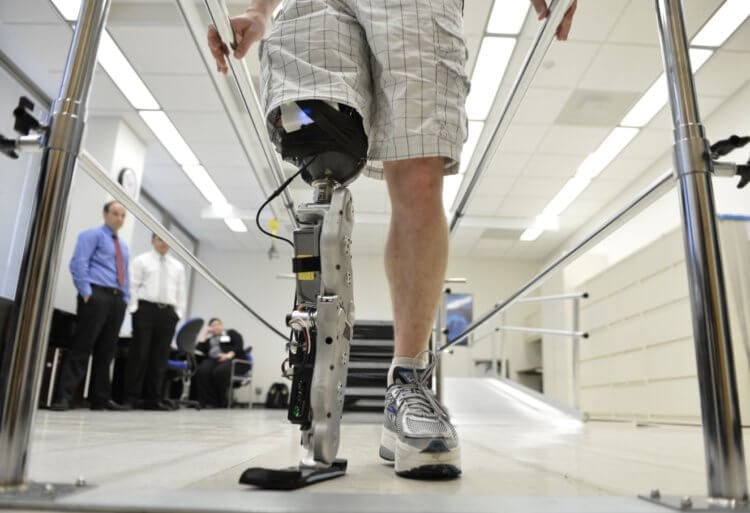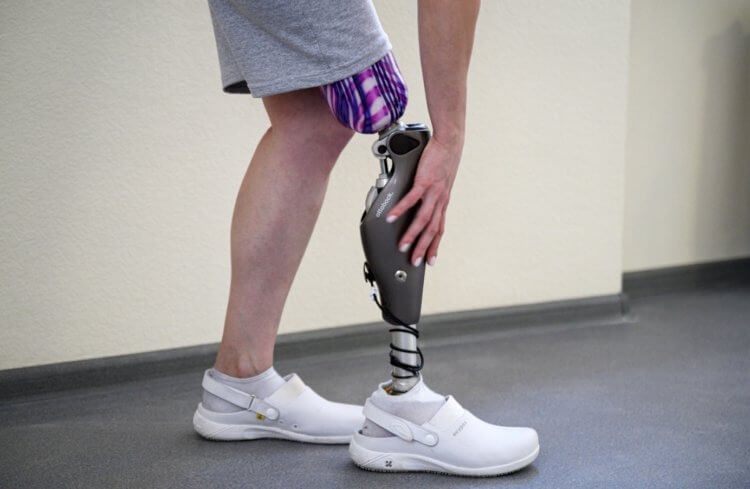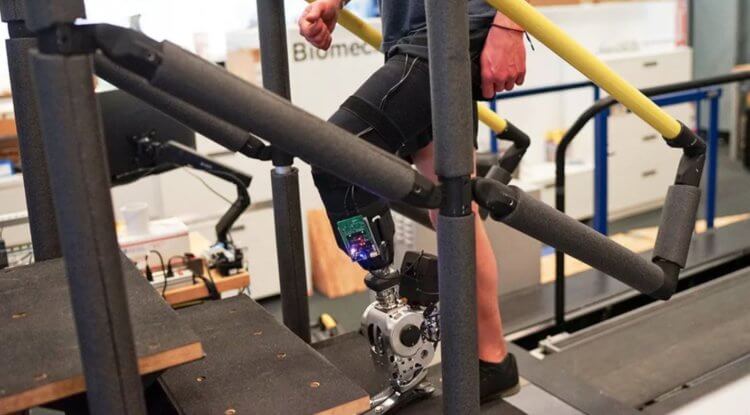According to statistics, there are approximately 57 million people in the world with amputated limbs. People usually lose their arms and legs as a result of falls, traffic accidents, and infectious diseases. To restore their mobility and return their quality of life to the previous level, people with lost limbs use prostheses. With their help, they can walk again, pick up objects, and so on. Recently, scientists have revolutionized the field of leg prosthetics – a technology has been created that allows you to control artificial legs with your thoughts. Owners of new prostheses perceive them not as something alien, but as natural parts of the body. With the help of such legs, they walk faster and even move up and down stairs with ease.

New prosthetic legs can be controlled by the power of thought – this is a revolution in the field of prosthetics. Source: mintpressnews.com
How prosthetic legs work
If you read our article about bionic prostheses, you know that prices for prosthetic arms and legs range from 5 to 50 thousand dollars. The cost depends on the materials used in the prostheses and the presence of electronic motors and sensors.

The price of prosthetic legs depends on many factors, everything is individual. Source: medical.com
All modern prostheses have a similar design and consist of several parts. First, prosthetics consist of a socket that attaches to the remainder of the leg and provides a secure connection to the torso. In the middle of the prosthesis there is a hinge joint, which is necessary to imitate the natural movement of the knee. Below that are the leg and foot, which are made of strong and flexible materials like aluminum. Also, some prosthetics are equipped with motors and sensors to speed up walking and the overall comfort of a person.
Read also: Prosthetic hands existed even in the Middle Ages, and their capabilities were impressive
The best prosthetic leg
Recently, an article was published in the scientific journal Nature Medicine about the creation of a revolutionary prosthetic human leg. Unlike conventional prosthetics, which rely on sensors and are felt by people as something foreign, the new development is controlled by a person’s brain and is an extension of his body.

A man with a new prosthetic leg climbs the stairs. Source: economist.com
As part of the scientific work, seven patients received a new bionic leg. Their abilities were compared with those of seven volunteers with conventional prosthetics. It turned out that a prosthesis controlled by a person’s thoughts increases a person’s walking speed by 41%. It also provides greater stability on uneven terrain and stairs. Also, patients with the new prosthesis noted that the new product relieved them of the unpleasant feeling of a phantom leg – it seemed to them that the amputated leg was still in place and causing discomfort.
You will be interested: What pain in the human body is considered the most severe
Brain-controlled prostheses
The next-generation prosthetic leg senses the activity of the remaining muscles in the leg and uses those signals to operate an electrically powered ankle. For it to work, the leg must be amputated below the knee, but with two pairs of muscles preserved – those that in a healthy leg are used to flex and move the foot from side to side. Usually, during amputation, these muscles are torn, but for those who want to get a new prosthesis, surgery can be performed to connect them.
After installing the prosthesis, if a person thinks about moving his feet, the brain sends signals about this to the muscles, and they are intercepted by electronics in the artificial legs. According to developer Hugh Herr, in the coming years he will install such prostheses for himself. He lost his legs in 1982 after suffering frostbite while climbing in a snowstorm.

Hugh Herr is the inventor of a new generation of prosthetics. Source: researchgate.net
The creators of the new prosthesis hope that a commercial version of their prosthesis will be available within the next five years. So, around 2029, leg amputees could significantly improve their quality of life. The main thing is that the design does not cost too much. In addition, most likely, to control artificial limbs with the power of thought, you need to install a chip in the brain.
What do you think about this invention? Share your opinion in our Telegram chat!
There is hope that in the future there will be no more people with disabilities in the world. The company Neuralink, founded by Elon Musk, is making great strides in this area. He has already installed a chip in the head of 29-year-old Noland Arbo, and today this patient easily controls the computer with his thoughts. You can read more about how he spends his weekdays and weekends in our article “How the man who was “chipped” by Elon Musk lives.” Its capabilities are impressive!